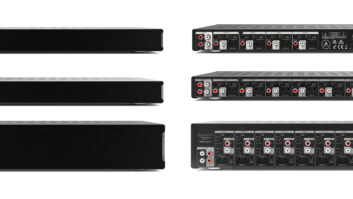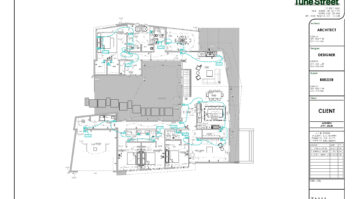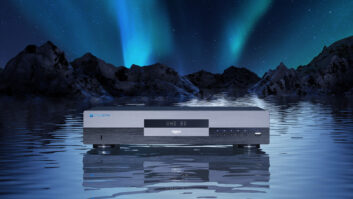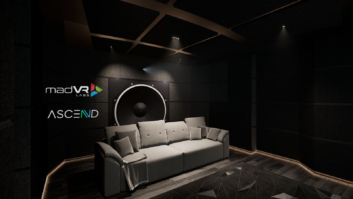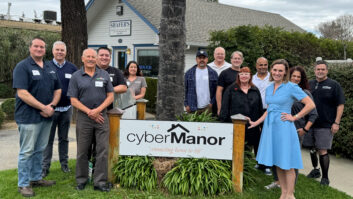One of the most challenging product selection decisions facing a custom electronics integrator is choosing a hardware and software platform that best supports the complete audio/video and home control requirements of our clients. Established companies like Crestron, AMX, ELAN and HAI are the veteran hardware/software vendors in this market, but many other companies like Premise Systems, Destiny, M+, HomeSeer, Superna, HomeLogic, Control 4 and Microsoft are offering products in this control category that challenge the dominance of the established veterans in this market.
All of these newcomers, combined, have only a fraction of the total custom electronics control market (some companies have yet to ship products), but all represent a new breed of control systems with Microsoft Windows or Linux at the core of their control systems operating platform.
Clearly, when one looks at all of the companies in this market segment, Microsoft stands out as the 800-pound gorilla. What is unique about the Microsoft offering is that unlike most of the other companies in this segment, Microsoft is primarily offering only a software solution (Microsoft Media Center 2005 and the Media Center extender software). The software was developed to support audio/video control in the home, but not complete home control, which often includes the control of lights, security, temperature and outdoor cameras. Microsoft knows what it does best, which is coding core operating system software and encouraging third-party developers to add applications that enhance their operating system.
In 2003, Microsoft released a software development kit for the Microsoft Media Center that attracted hundreds of third-party developers to write software enhancements for the Media Center platform, including applications that now add home control functionality. In 2004, Microsoft allowed all system builders of personal computers to load the Media Center 2005 software on their computers. The software was no longer restricted to just a handful of certified Media Center partners like HP and Sony. One now can find the Media Center 2005 software on sub-$1,000 entry-level computers all the way up to $5,000 to $10,000 rack-mounted ISF certified computers.
Microsoft enjoys some very significant benefits as the market dominant force in the complex world of home control software. While all other companies must (for the most part) write software bridges between their control platform software and the thousands of devices in the home that they are trying to control, Microsoft has enough market clout that third-party developers eagerly will write this software for Microsoft. These developers hope to capitalize on the anticipated widespread acceptance of the Media Center platform and the subsequent sale of their enhancement software. These same comments can be made about hardware platform manufacturers. Given that the Media Center can now be loaded on almost any personal computer, there are more Media Center control platform options than all of the other competitive control system platforms combined. This open standard allows the integrator (or the end-user) to purchase a control platform that can be customized with the exact processor speed, hard drive size and memory one needs to optimally run the control system software.
At CES, I focused my attention on how the Media Center platform has evolved over the last few years to determine if it can now be considered as a viable control system platform for the custom electronics integrator and our clients. Given Microsofts dominance in the operating system market and the strength of its developer community, this is a question that every custom electronics integrator should be considering.
Software Enhancements to the Media Center Platform. There are now dozens of companies offering software enhancements to the Media Center platform that extend its control into home automation. Some companies, like HAI and HomeSeer are offering a Media Center graphical interface to their own control platforms, while others, like Exceptional Innovations LifeWare, in2 Networks and ConvergeX are authoring software bridges for the Media Center control platform that extend its control into lighting, security, camera and thermostats. There are also a number of smaller, independent Media Center enthusiasts that have written custom Media Center enhancements to support personal contact and calendar information, local weather and personal recipes (see the developers section on www.thegreenbutton.com)
Another key area that differentiates the Microsoft Media Center platform from its competitors is a tab in Media Center called Online Spotlight. Recognizing that entertainment content from the Internet is rapidly becoming a viable complement to personally owned content or cable/satellite feeds, a number of companies have established portals that seamlessly fit within the Media Center graphical control interface. At CES this year XM Radio, YahooTV! and MTV all made announcements that they currently support or will soon support the Media Center platform for viewing and listening to their content. These new partnerships complement the movie on-demand content services from MovieLink and CinemaNow that were announced for the Media Center platform last year. This trend of media conglomerates supporting the Microsoft platform is likely to continue and accelerate in the years ahead.
Hardware Enhancements to the Media Center Platform. One of the main reasons that most custom electronics installers did not consider the Microsoft Media Center computer a viable AV/Home Control component over the last few years centered on the fact that most of these offerings were noisy, ugly, unreliable, computers with poor video quality (not to mention that there was no margin on any of these mass marketed computers for the custom integrator). That reluctance to support the Media Center must now be reconsidered. With rack-mountable product offerings from Niveus Media, Alienware and Stack9, robust Media Center platforms that pass ISF certification are now being offered. For the most part, the companies that manufacture these computers recognize that their high-end Media Center platforms are best installed by the custom electronics community and are offering profit margin and technical support programs that reflect their interest in our channel.
Portable Media Players continue to attract a lot of attention. Product offerings from Creative Labs, Samsung and iRiver offer a Media Center interface on a portable product that lets one carry their songs, videos and photos wherever they go. Given the success of Apples iPod, its clear that portable digital entertainment products are a huge market and our clients will increasingly want to transport their homes entertainment content to their mobile electronic devices. A key benefit delivered by the Media Center platform is that the standard graphical interface for all the audio/video/control products in the home now closely matches the interface on these new mobile digital entertainment products.
Whats Missing from the Media Center Platform. Its clear that the Microsoft Media Center is gaining on its competitors in the home audio/video and control space with the steadily growing assistance of its third-party hardware and software developers. But is this product and its third-party enhancements ready for primetime in our custom electronics integration world? Not quite yet, and heres why.
No support for a multi-room audio system. While the Media Center platform and it Media Center extenders can add audio content and control to every room with a monitor, audio cannot be delivered to hallways, backyards, dining rooms or other areas of the home that dont have some sort of monitor. The missing product would be an in-wall touch screen or keypad that could be used to source select and volume control a multi-room digital audio source, and this doesnt exist…yet.
No support for personal video recording of high-definition cable, satellite feeds or DVDs. This is a big issue. The obvious legal concern is that if high-definition satellite/cable content or DVDs are recorded onto a Windows-based computer hard drive connected to the Internet, then a common file-sharing application can easily and illegally copy copyright-protected content all over the world. Until this video problem is resolved with some sort of copy protection flag endorsed by Hollywood, the Media Center computer will not be able to legally record and playback high-definition content. At the present time, high-definition personal video recording can only be accomplished with closed, non-networkable set-top boxes.
Lack of high-definition support with Media Extender platforms. While Media Center extenders support component video, they are currently limited to 480 lines of vertical resolution, not high-definition quality. For true high-definition, multi-room video support one would need to install a full Microsoft Media Center platform in every room requiring high-definition content.
And then there is Linux. For all the millions of programmers around the world enhancing the Microsoft operating system platform, there are also millions of programmers around the world supporting the anti-Microsoft platform. Linux now can be found in the homes routers, set-top boxes and, increasingly, control boxes. These Linux-based hardware devices are typically built for a specific task and as a result they are usually more reliable than those based on the multi-tasking Windows operating system. No custom electronics integrator wants to stake their professional integrity on a whole-house control system that may not be 100 percent reliable. To alleviate this concern we may find that Windows XP embedded will serve as the operating system engine behind the Media Center platform in the near future.
Until that day arrives, however, Media Center 2005 is still running on an XP host computer capable of loading any rogue application and/or virus that comes along. In HP CEO Carly Fiorinas CES keynote one heard that even HP, one of Microsoft Media Centers first and staunchest supporters, will be unveiling its own Linux-based Media Center computer later this year. The battle for the ultimate control of the digital content and automation of the home will be hard fought between the Microsoft and Linux camps and even a company the size of HP doesnt want to predict the winner of this battle.
Do what HP is doing and hedge your bets. Continue to provide your clients with a tried and true control platform that you know works reliably and offers the hardware and software support for all the functions your clients need. And get a Microsoft Media Center 2005 platform for your own home. This should be part of your companys research and development efforts. The Media Center software is not going away. In fact it may be bundled in Microsofts next release of XP, called Longhorn, in a few years. If thats the case, then all of your clients will have this software in their home and they will want to know why it cant be their Crestron, AMX, Elan or Control4 AV/control solution for a lot less money. You will need to have some specific answers to these questions, and the best time to start building that knowledge base is now, in your own home where you can test it every day.
Gordon van Zuiden ([email protected]) is president of cyberManor, an Internet Home Solutions company in Los Gatos, California.

